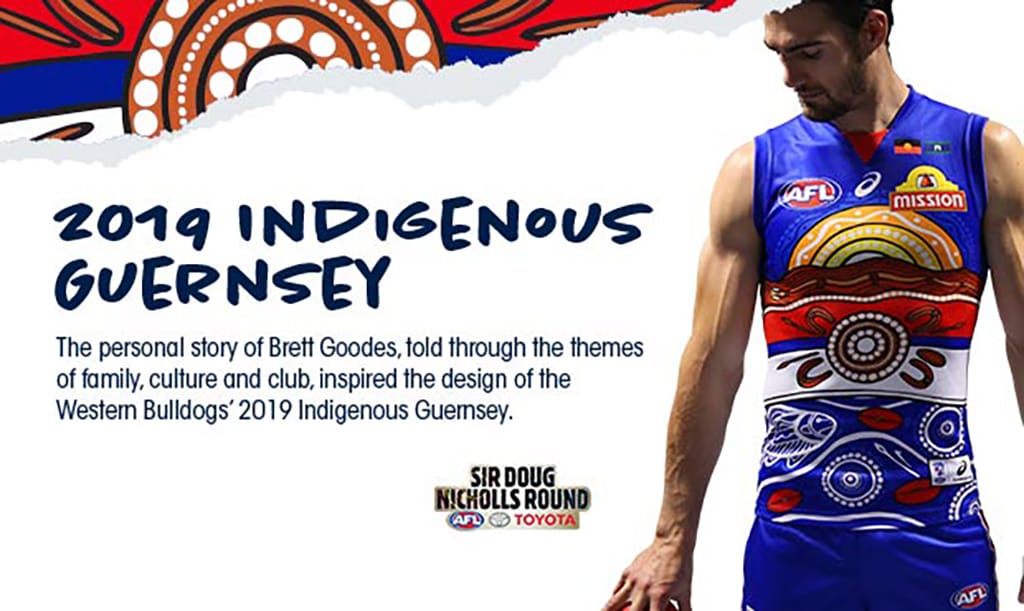
Designed by: Andrew McLeod and his brother Jonathan.
Story: Unique design paying homage to their Torres Strait Islander culture through nine different elements - Koedal, Cod fish, Rope, Spiral shells, Decorative ornamental shells, Long Bum, Waru, Warup, Dhangal. The centrepiece of the guernsey is a headdress, known as a Dhoeri - a significant piece of McLeod’s culture.
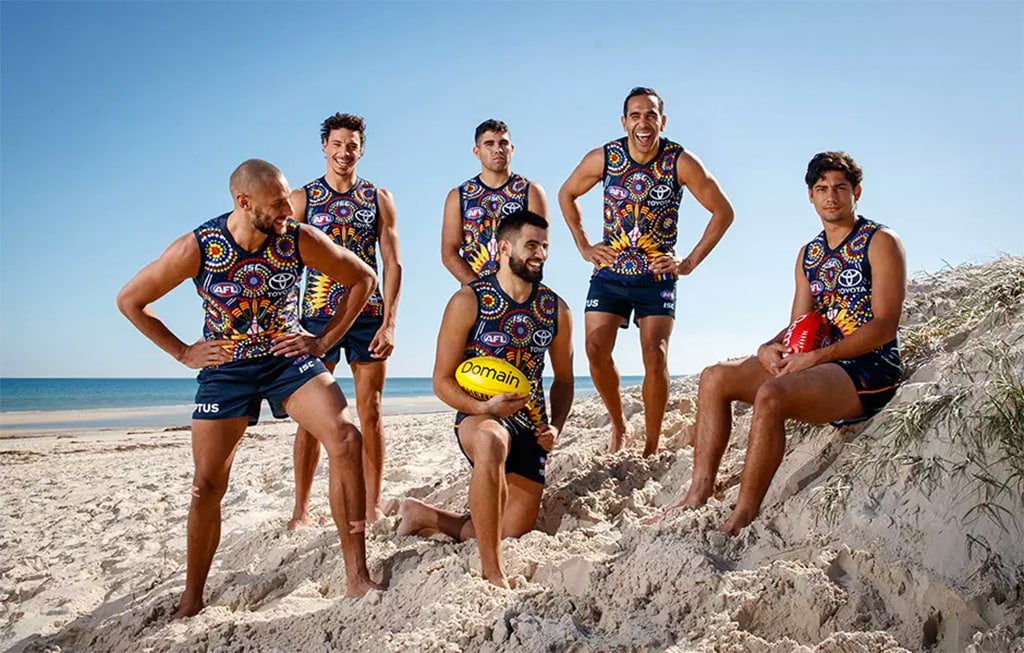

Designed by: Derek Oram, a proud Birri Gubba-Barada Ghungullu-Darumbul man.
Story: The two paintings reflect country, specifically south-east Queensland and displays a traditional map focusing on ancient and culturally significant parts of the Brisbane CBD. The small white dots represent the old travelling pathways of indigenous ancestors between meeting places. The yellow circles spread across the mountains represent camp fires (darlo). The Lions colours have been incorporated into the sunset that blends the mountains into the night sky.
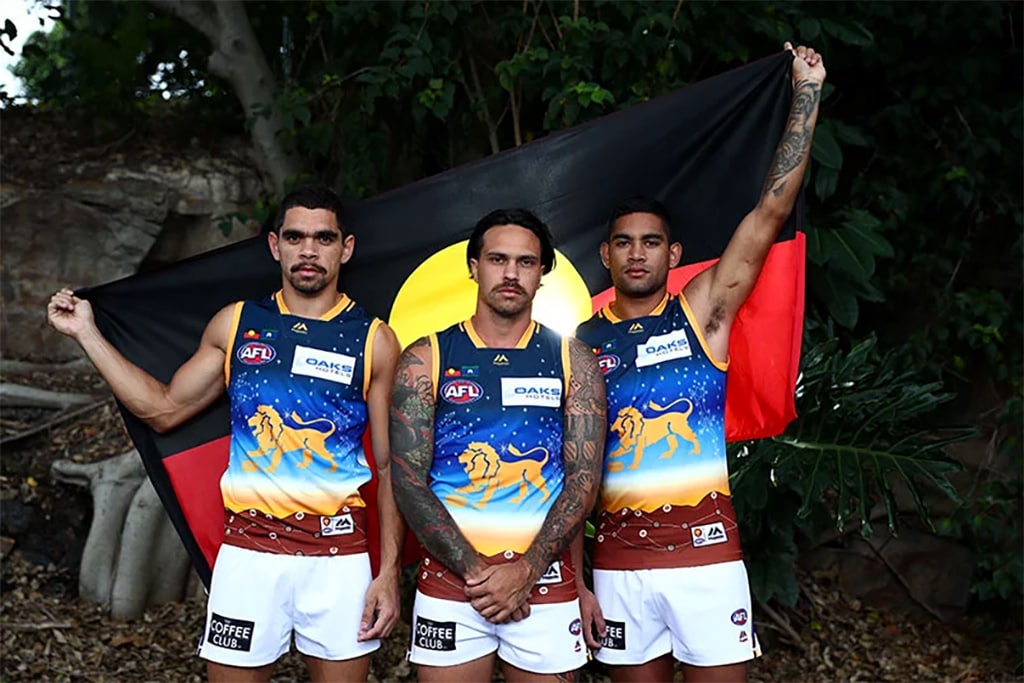

Designed by: Shelley Ware, a proud Yankunytjatjara and Wirangu woman from South Australia
Story: The design entails the iconic navy blue with meaningful indigenous symbols which represents family, strength, protection and highlights the path each individual player has taken on their journey to Carlton.
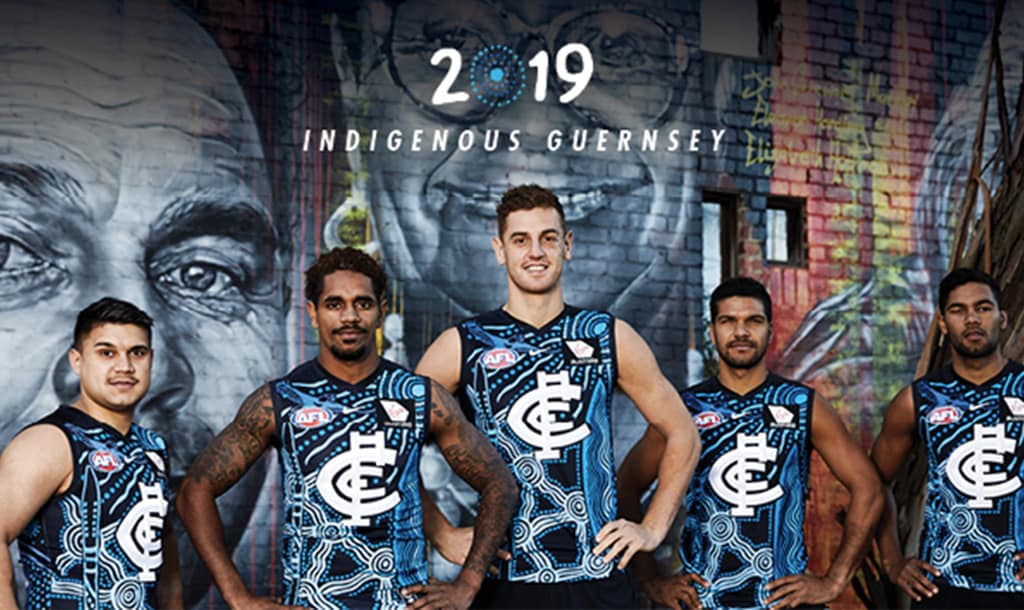

Designed by: Lea-Anne Miller, Travis Varcoe's sister-in-law
Story: The inner circle represents the players, united as one entity. The dots around the players represent the families, staff and those connected and supporting the team day to day. Much the same as a traditional camp, the outer circle and dots represent people coming together from different players within the Collingwood community, including our fans and supporters.
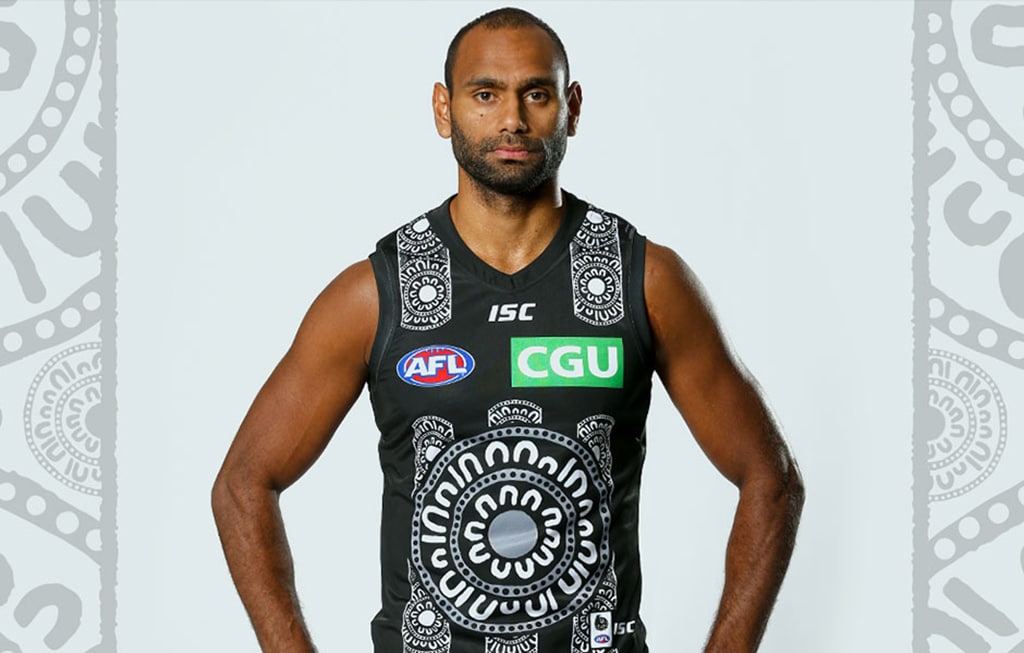

Designed by: Merryn Apma Atkinson, an original participant in the inaugural Long Walk in 2004
Story: "The colours represent Essendon, Mother Earth and our people. The circles and tracks are the towns and mileage walked by Michael Long. The square symbols are Michael with his stick and the men who walked with him. The 'U' shapes represent the women who walked. The circles are the people who came together as a blended community – this is the legacy of the Long Walk," Atkinson said.
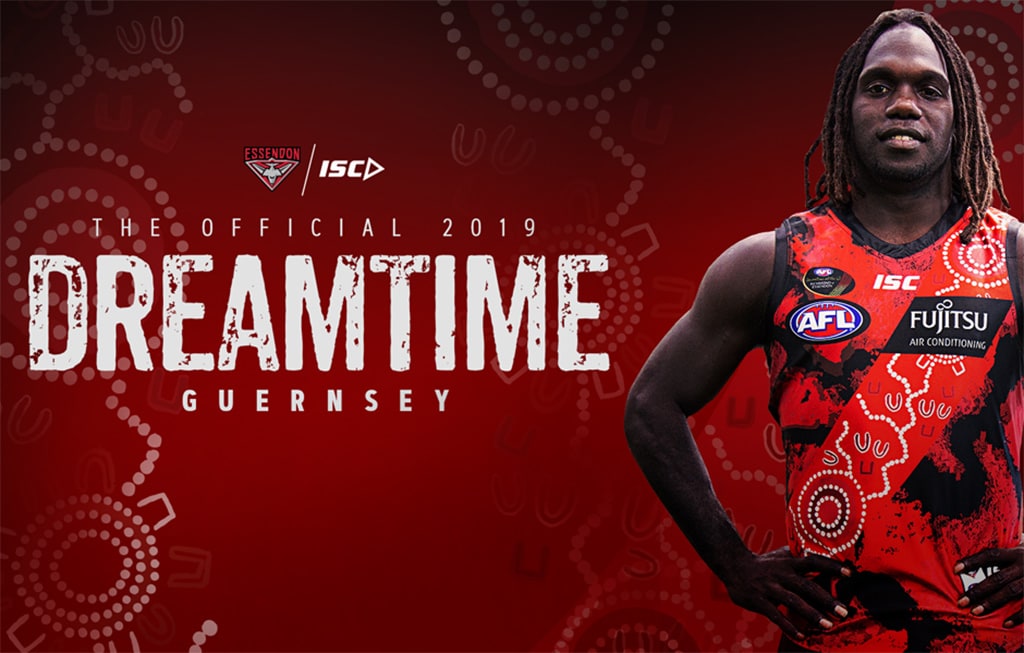

Designed by: Troy Cook and Carnarvon artist Victor Bellotti
Story: Cook utilised the landmarks, fauna and cultural connections that have had a lasting impression on his life. The Gascoyne River is the central feature of the jumper. "The river was my oasis. Spearing, lashing, fishing and swimming with family and friends was a regular occurrence. Either side of the river are the tracks of a kangaroo, emu and goanna. Each was hunted as a respected food source for many families. The animals survive around the permanent water holes," Cook said.


Designed by: Quinton Narkle
Story: A representation of a number of significant stories including the connection to the Geelong region on Wadawurrung Country, Narkle's own region in Western Australia, the language of all seven current Geelong indigenous players and a tribute to club legend Graham 'Polly' Farmer. "The Giant Trevally represents our connection with the Arnhem Land region and the snake-like pattern throughout the whole jumper symbolises the rainbow serpent which is the creator of my own region. As a sign of respect for Polly Farmer, his number 5 appears on the front and back of the guernsey. A tribute to him and all he has done for the Geelong Football Club and indigenous players," Narkle said.
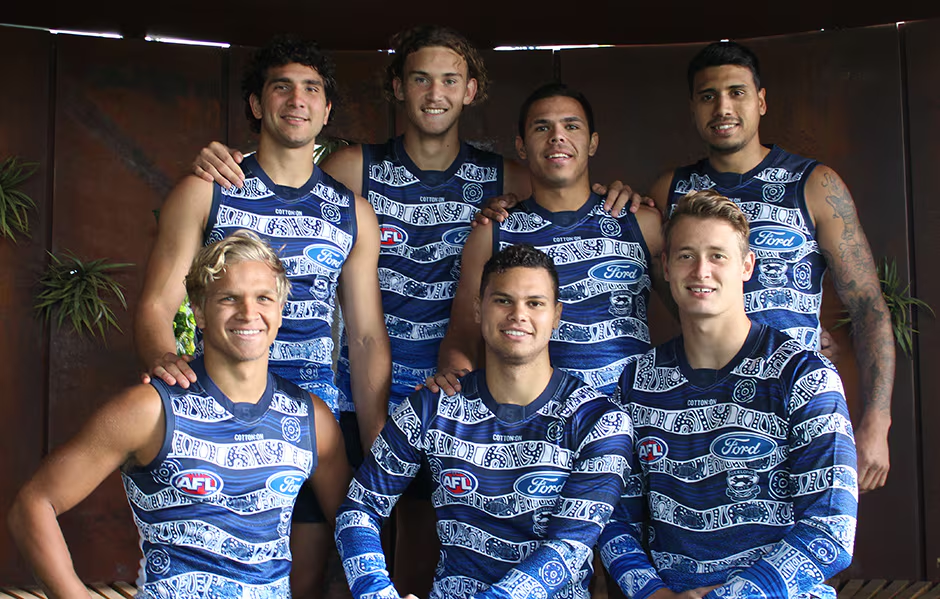

Designed by: Local Yugambeh man Luther Cora in conjunction with the clubs Indigenous AFL players
Story: The guernsey is designed with a pattern of cracked earth representing Queensland and traditional Aboriginal artwork watermarked throughout. "There are a few elements in the guernsey this year, in the background we’ve got the land or the earth, representing country, particularly the land we’re on here on the Gold Coast. Suns colours feature, but they’re also traditional colours, yellow represents women, red represents men and they’re both coming together on the one guernsey to represent our community," Cora said.
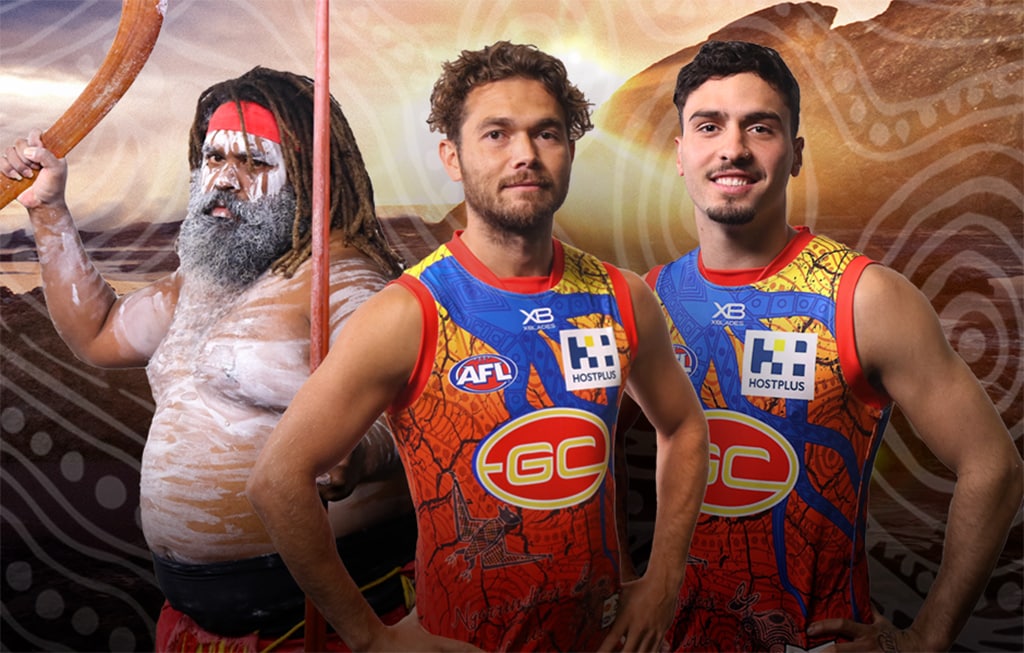

Designed by: Based on artwork by Wiradjuri woman Leeanne Hunter
Story: Called 'Football Dreaming', the jumper represents harmony, health, education and employment; the Giants' four community pillars. The oval on the front represents a football, while the hands represent the people – family, friends and staff of the club. The two boomerangs that sit on the chest of the design are symbolic of the acknowledgement and connection to indigenous culture, and pride in aboriginality. On the back of the guernsey a large circle represents the club, the meeting place, where people gather in harmony and reconciliation, to be employed and to learn. The flying boomerangs around the meeting place are symbolic of the constant movement of life and the game of football. The footprints walking to and from the meeting represent a footballer’s journey. They come to the club to work and learn, and they leave stronger and smarter than when they arrived.
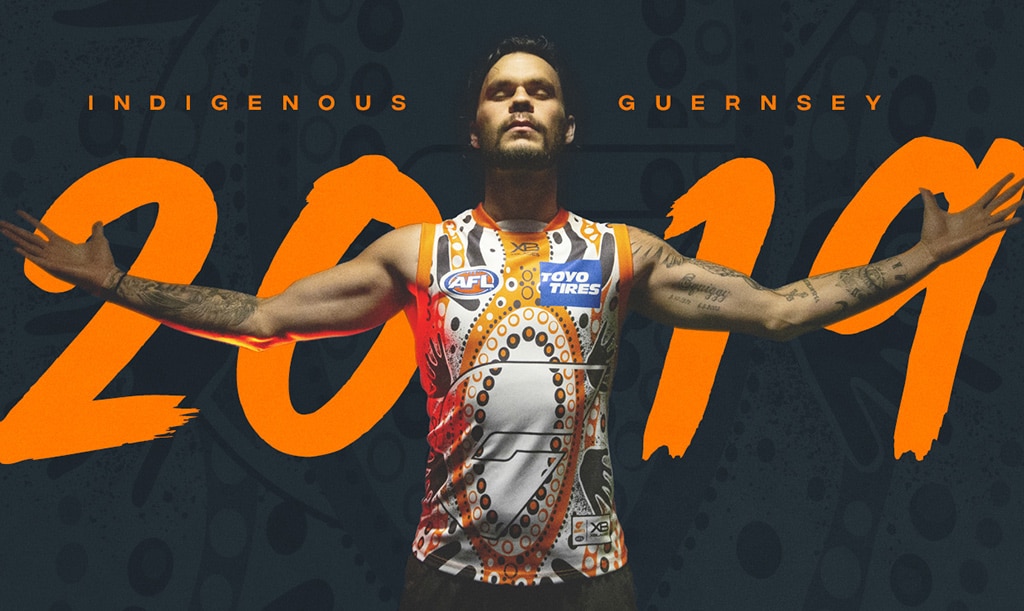

Designed by: Jennifer 'Lulu' Coombes (Cyril Rioli's aunty)
Story: The design features pukumani poles on the front (cultural poles that are placed around the graves of the deceased in order to protect the passed from evil spirits) and circular depictions of a Kulama Yam Ceremony on the back.
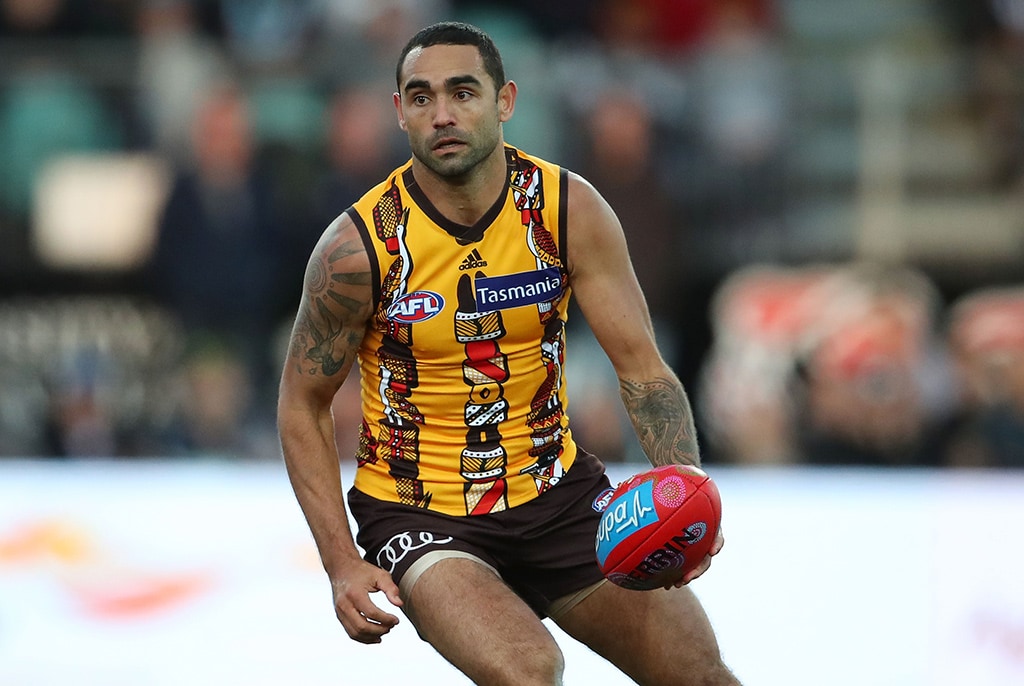

Designed by: Mary Young, a local artist from Santa Teresa
Story: The design around the neck is based on a boomerang and reflects the traditional Melbourne Football Club design. Circles are group of warrior men. The design down the side represents Country. The design at the bottom symbols lines and links between us all.
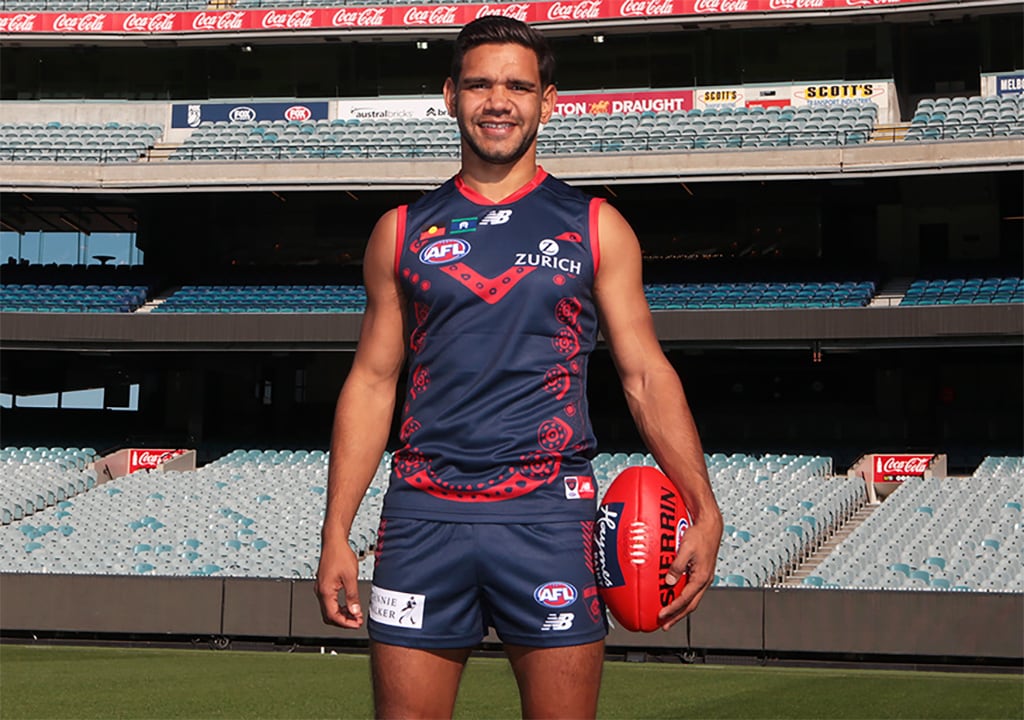

Designed by: Mok artist Lorraine Kabbindi White
Story: Featured on the North Jumper are powerful totems of each of its Aboriginal players - The Honey Ant (Jed Anderson), Goanna (Paul Ahern), Turtle (Jy Simpkin) and Water (Kyron Hayden). The Totem design also features the Rainbow Serpent or Ngalyod, a powerful being that originated from beneath the earth and created hige ridges, mountains and gorges, pushing its way towards the surface of the land. Arden St, the Roos spiritual home is featured through a blue oval or deep waterhole in which Ngalylod dwell. The centre of the jumper symbolises the NMFC, with the six blue bands running into it representing the main rivers and water from each of the players home country, linking it back to their country.
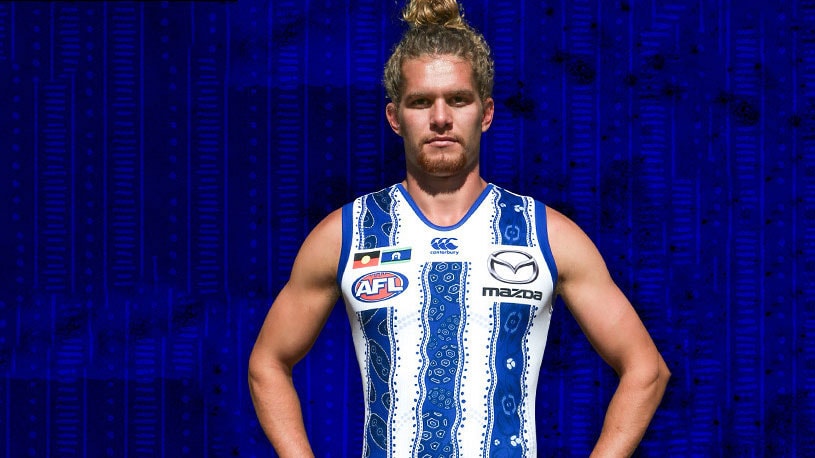

Designed by: Sam Powell-Pepper
Story: "On the left of the guernsey are the 16 indigenous players and staff that we have at Port Adelaide. I think the most in the AFL which is something we are very proud of. Here on the heart we have the 46 players - us boys, the brothers, on the heart, one heart. The bottom left circle represents Alberton Oval, our heartland, where all players and staff come together to support our dream of playing AFL," Powell-Pepper said.
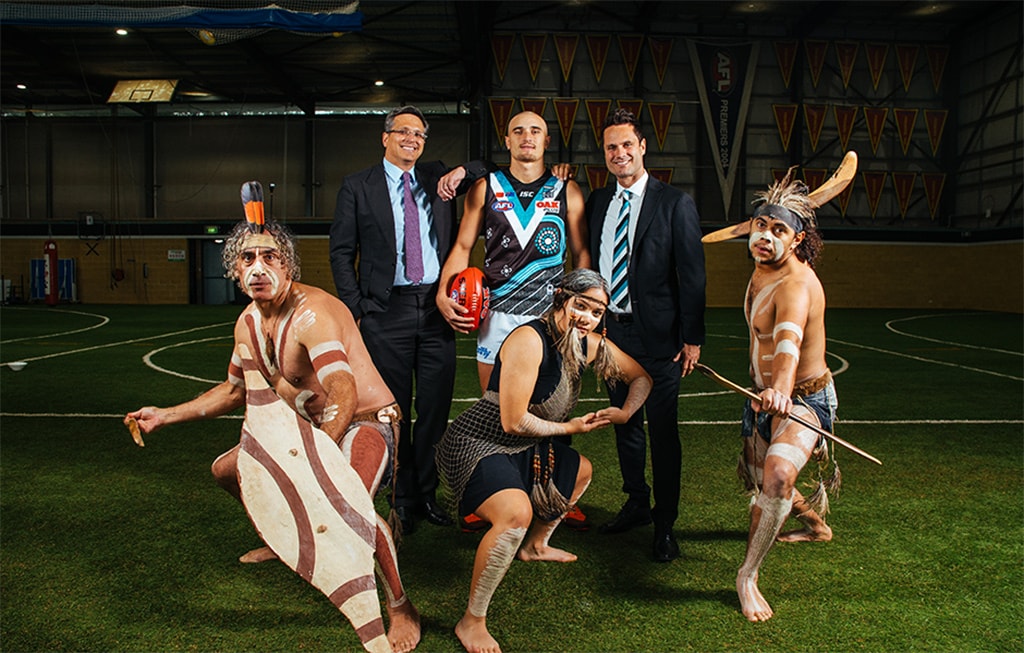

Designed by: Daniel Rioli and his parents
Story: The Pukumani pole that the Turtle sits on in the special guernsey represents Daniel’s people, the people of the Tiwi Islands, and the bird atop the pole is native to Tiwi, appearing proudly on the flag. "The turtle is my totem which goes way back, it’s very special to me so I wanted it included twice on the jumper, it’s the dreaming and spirit animal of the Rioli family. I have no idea how dad got good at drawing, but he did all the dot paintings around the jumper, which is a big part of Aboriginal culture, the colouring’s are iconic to the Tiwi Islanders’ style of artwork. The spears on the reverse are similar to those my friends and I used to go hunting with and traditionally into battle, they represent men, and power," Rioli said.
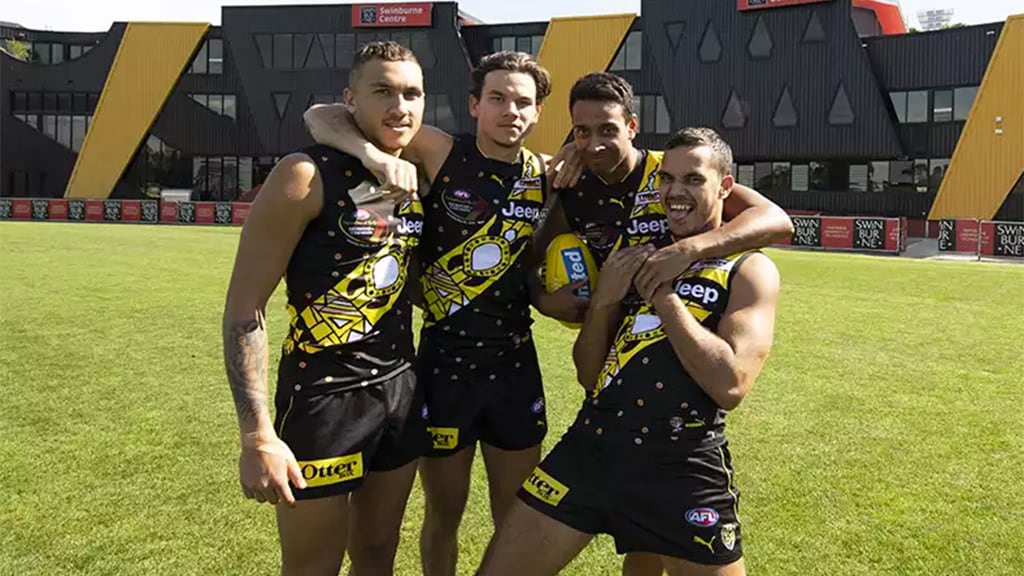

Designed by: Emily Long (sister of Ben Long) and club graphic designer Megan Mitchell
Story: The front of the guernsey represents the Long family’s paternal grandfather’s ancestors, the Anmatyere people, who come from Ti Tree, Northern Territory. The three eggs and footprints symbolise the emu, totem of the Anmatyere people. The two watering holes represent the land that the emus frequent, connected by Twenty Mile Creek. The shark represents the protector of the Tiwi Islands, where Jack Long was adopted by the Kerinaiua family, where they were born and still live to this day. The back of the guernsey represents the Long family’s paternal grandmother’s ancestors, the Maranunggu people, who hail from Daly River, Northern Territory. The feathers represent the White-Tailed Sea Eagle. The eagle is the protector, hunter and all-seeing totem of the Maranunggu people.
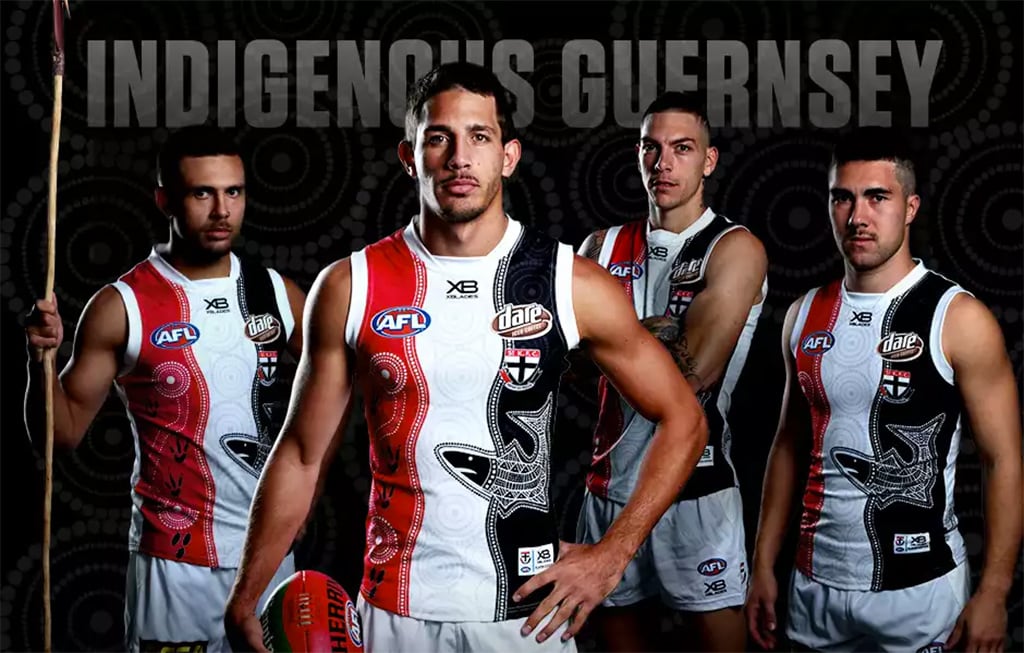

Designed by: Cheryl Davison
Story: The design by Cheryl Davison tells a dreamtime story of a beautiful white swan that was attacked by fellow swans until it was bloodied and left without feathers. A black crow came to the rescue of the swan, tended to its wounds and gave it some of its own black feathers to ensure it wasn't cold.


Designed by: Darryl Bellotti
Story: The 'Wings of an Eagle' artwork draws inspiration from traditional Aboriginal ceremonial practice. The eye-catching feathers wrap around the player like a ‘Booka’, a traditional kangaroo skin cloak, while the white lines represent song lines to sacred ceremonial areas. There are three circles located in the 'heart' of the guernsey, which depict the playing and coaching group in the centre, support staff surrounding them, and the fans around the outside.


Designed by: Nathan Patterson
Story: Inspired by the personal story of Brett Goodes, told through themes of family, culture and club. Family - "the most important element, and the centrepiece of the design, represents my love for family; sitting at a campfire with my brothers Jake and Adam, and my mother Lisa." Culture - "I am of Adnyamathanha & Narugga descent (South Australia). Adnyamathanha, also known as the ‘Rock People’ of the Flinders Ranges, is represented in the artwork with the sun rising on Akurra (giant water snake) moving and shaping the Ranges around him." Club - "At the bottom of the design there are three footballs and three circles, representing my connection to the club; my first role as player welfare manager, my current role working in Indigenous programs and my time as a player spanning over eight years."
